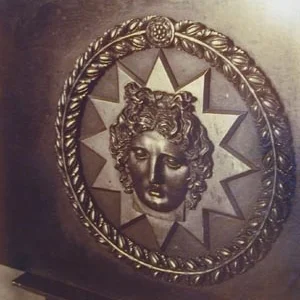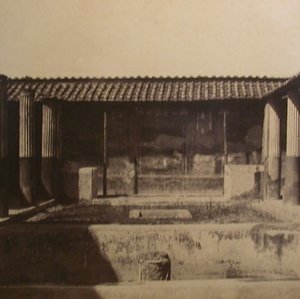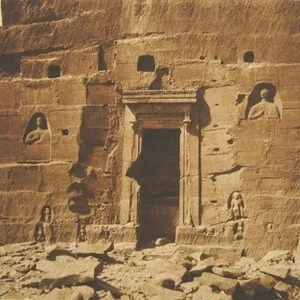The work of Eugène Atget is one of the richest pictorial embodiments of French culture. Working as a photographer mainly in and near Paris from the late 1890s until his death in 1927, Atget made a total of about 10,000 individual images. Over the course of his long career he discovered and progressively mastered photography’s capacity to transform plain fact into visual poetry. In the rapid unfolding of modernist photography in the late 1920s and early 1930s, Atget’s work soon became the exemplar of the medium’s new creative power. No major photographer in the half-century following his death was untouched by Atget’s influence. At his death in 1927, the French government purchased a portion of Atget’s negatives; the remaining contents of his studio and greater body of his work were purchased by photographer Berenice Abbott and art dealer Julian Levy. Carefully looked after by Abbott, the collection was later sold to the Museum of Modern Art.
Read MoreÉdouard Baldus was born in 1820 in France and worked as a painter in the 1840s photography peeked his interest. He was a founding member of the Societe Heliographique and an important influence to the art of heliogravure, a photomechanical process. He used the calotype process from 1851 and began using collodion wet-plate negatives and albumen prints in 1956. A pioneer of the photographic medium, he documented architectureal monuments of France as well as landscpes, paintings and the documentation of the Rhone Floods. In 1851 he was commissioned by the Comite des Monuments Historiques to photograph monuments in Paris, Fontainebleau, Burgundy, the Dauphine, Normandy, Auvergne and Provence. During 1854-1855 Baldus created 1,500 photographs of a new wing of the Louvre in Paris and was commissioned by Baron James de Rothschild to photograph the railroad lines in France.
Read MoreBoubat was born in Montmartre, Paris. He studied typography and graphic arts at the École Estienne and worked for a printing company before becoming a photographer. In 1943 he was subjected to service du travail obligatoire, forced labour of French people in Nazi Germany, and witnessed the horrors of World War II. He took his first photograph after the war in 1946 and was awarded the Kodak Prize the following year. He travelled the world for the French magazine Réalités, where his colleague was Jean-Philippe Charbonnier, and later worked as a freelance photographer. French poet Jacques Prévert called him a "peace correspondent" as he was humanist, apolitical and photographed uplifting subjects. His son Bernard Boubat is also a photographer.
Read MoreHenri Cartier-Bresson was persuaded by Robert Capa to call himself a photojournalist rather than an artist or a Surrealist for his first New York show. Best known for his concept of the "decisive moment" in photography. At its best this leads to a dynamic image but easily becomes - even occasionally in the hands of the master himself - a formal stasis. Cartier-Bresson is the recipient of an extraordinary number of prizes, awards and honorary doctorates including the Overseas Press Club of America Award (1948, 1954, 1960, 1964), The A.S.M.P. Award (1953), the Prix de la Société Française de Photographie (1959), the Culture Prize, Deutsche Gesellschaft für Photographie (1975). Capa also persuaded Cartier-Bresson to become one of the founders of Magnum.
Read MoreGustave Le Gray has has been called the most important French photographer of the nineteenth century. Trained as a painter under Paul Delaroche, Le Gray made his mark in the emerging medium of photography. An experimenter and technical innovator, Le Gray pioneered the use of the paper negative in France and developed a waxed-paper negative that produced sharper-focus prints. In 1851 he began to use collodion on glass negatives, which further increased the clarity of his images. He became one of the first five photographers, along with Édouard-Denis Baldus and Hippolyte Bayard, to work for the missions héliographique, a government-sponsored commission to document the state of repair of important French monuments and buildings. He was also a founding member of the Société Héliographique, the first photographic organization in the world. In the early 1860s he toured the Mediterranean with Alexandre Dumas. He spent his last years in Lebanon and finally Egypt, where he became a professor of drawing and where he died, in 1884.
Read MoreCharles Marville was initially trained as a painter, engraver and illustrator before he became a landscape and architecture photographer. Many of his works were made in Italy, Germany and Algeria. He was commissioned to document some of the ancient architecture in Paris during the 1850's and was hired by the Musee du Louvre to make reproductions of artwork in the collection. Marville was made the official photographer in Paris in 1862.
Read More








